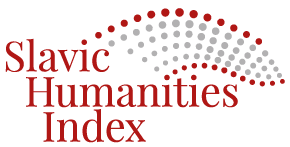Medijske politike interpelacije i posljedice etnički razdijeljenog medijskog prostora u Bosni i Hercegovini / Interpellation Media Policies and Consequences of Ethnically Divided Media Space in Bosnia and Herzegovina
DOI:
https://doi.org/10.48052/19865244.2025.2.113Keywords:
media policies, interpellation, political parallelism, communication/media needsAbstract
The historical facts of the development of the information/communication and media system in Bosnia and Herzegovina represent that each political system has reformed the existing communication channels, organizing them according to its own ideological ambitions. Different types and forms of social control of the media space in Bosnia and Herzegovina in history have most often been motivated by “fear of political subversion“ (McQuail, 2010). The contemporary history of the nineties and the war in Bosnia and Herzegovina resulted in the creation of media spaces that corresponded with the ethnically divided territory and continued the media policies of interpellation, blind following/manipulation of the ideology that Marxist philosopher Althusser defines by imposing ways of thinking or living that correspond to established national concepts. Forms of political parallelism of the media in Bosnia and Herzegovina today are visible through indicators of organizational or financial connections between media structures and different political/interest groups, political orientation of editorial and journalistic staff, and the use of media conditioned by territorial-ethnic criteria. The subject of the analysis is the degree and form of political parallelism of the Bosnian-Herzegovinian media in history. The analysis tried to answer the problematic question related to the issue of objective recognition of the needs and interests of the public in the creation of everyday media agendas, which, among other things, should be in the function of criticism, control and integration, and which are today strongly influenced by historical media practice and media heritage. The research starts from the hypothesis that every state-legal organization in the history of Bosnia and Herzegovina, in order to establish and consolidate a certain system, also established specific communication/media structures, which enabled media promotion and consolidation of the already existing socially established practice of an ethnically divided society. The aim of the research is to point out the importance of establishing and developing stable and independent media organizations in Bosnia and Herzegovina that will enable the nation to imagine itself as coherent, significant and homogeneous community and to point out that basic media functions can be valuable resources for overcoming ethnic, political, nationalist and hegemonic policies in contemporary social constellations.
References
Ademović, F. (1998). Bosanskohercegovačka štampa. Sarajevo: Nezavisna unija profesionalnih novinara BiH, Soroš media centar.
Anđelić, N. (2003). Bosna i Hercegovina između Tita i rata. Beograd: Samizdat, B92.
Arnaut Haseljić, M. (2020). Odgovornost medija za zločine. Pregled: časopis Za društvena Pitanja / Periodical for Social Issues, 1(1), 229–241. Pristupljeno april 2025., preuzeto sa https://www.pregled.unsa.ba/index.php/pregled/article/view/697 .
Arnaut Haseljić, M. (2021). Politike i prakse prikrivanja zločina: masovne grobnice na području Sarajeva: 1992-1995. Institut za istraživanje zločina protiv čovječnosti i međunarodnog prava Univerziteta.
Baran, S. J., Davis, D. K. (2012). Mass communication theory: Foundation, ferment, and future. Boston: Wadsworth Cengage Learning.
Bjelica, M., Jevtović, Z. (2006). Istorija novinarstva. Beograd: Megatrend Univerzitet primenjenih nauka.
Brigs, B., Berk, P. (2006). Društvena istorija medija. Beograd: Clio.
Čačinović, N. (2001): Doba slike u teoriji mediologije. Zagreb: Jesenski i Turk.
De La Bross, R. (2003). Izvještaj sačinjen na zahtjev Tužilaštva Međunarodnog krivičnog suda za bivšu Jugoslaviju, Politička propaganda i projekt “Svi Srbi u jednoj državi”: posledice instrumentalizacije medija za ultranacionalističke svrhe. Pristupljeno april 2025., preuzeto sa https://www.icty.org/x/cases/slobodan_milosevic/prosexp/bcs/rep-srb-b.htm. Fidler, R. (2004). Mediamorphosis, razumevanje novih medija. Clio.
Gros, M. (1976). Historijska znanost, razvoj, oblik, smjerovi. Zagreb: Sveučilište u Zagrebu.
Izvještaj o ostvarivanju Plana programa Radio – Sarajeva i Televizije Sarajevo u 1988. godini, Plan programa Radio – Sarajeva i Televizije Sarajevo za 1989. godinu i pretpostavke za njihovo ostvarivanje: prijedlog, Radio – televizija Sarajevo, 1988., Oslobođenje, Sarajevo.
Kunczik, M., Zipfel, A. (2006). Uvod u znanost o medijima i komunikologiju. Pristupljeno septembar 2017., preuzeto sa: http://www.fes.hr.
Lou, P. E. (2010). Mediji i politički proces. Edicija katedra, Univerzitet u Beogradu, Fakultet političkih nauka.
McChesney, R. (2008). Bogati mediji siromašna demokratija- komunikacijske politike u mutnim vremenima. Sarajevo: Šahinpašić.
McQuail, D. (2010). Mass communication theory. (6th ed.). London: Sage.
Pirolić, Z. (1995). Radio reporter. Sarajevo: Nezavisna unija profesionalnih novinara BiH.
Prajs, S. (2011). Izučavanje medija. Beograd: Clio.
Praskač-Salčin, I. (2014). Organizacija BH medijskog sistema primjerenog savremenim potrebama BH društva. Medijski dijalozi: časopis za istraživanje medija i društva, (20), 433-453. UDK: 316.774:654.1(497.6).
Praskač - Salčin, I. (2023). Razvoj radija u Bosni i Hercegovini. Sarajevo: Fakultet političkih nauka. 20. Procjena potreba medijskog sektora u Bosni i Hercegovini, Izvještaj o provedenom istraživanju javnog mišljenja o potrebama medijskog sektora u Bosni i Hercegovini, OSCE, 2022, pristupljeno april 2025., preuzeto sa https://www.osce.org/files/f/documents/a/9/520154.pdf.
Radojković, M., Stojković, B. (2009). Informaciono komunikacioni sistemi. (2 ed.). Beograd: Clio.
Sabato, L. (1993). Feeding Frenzy: How Attack Journalism Has Transformed American Politics. The free press.
Tompson, M. (2000). Proizvodnja rata: Mediji u Srbiji, Hrvatskoj i Bosni i Hercegovini. Beograd: Medija centar.
Tucaković, Š. (2006). Historija novinarstva i medija u BiH. Sarajevo: S & A company.
Tucaković, Š. (2000). Historija komuniciranja, Sarajevo: Univerzitetska knjiga.
Turčilo, L., Buljubašić, B. (2017). Mediji i shrinking space u Bosni i Hercegovini: utišani alternativni glasovi. Sarajevo: Fondacija Heinrich Böll, Ured za Bosnu i Hercegovinu, Makedoniju i Albaniju.
Udovičić, Z., Jusić, T., Halilović, M., Udovičić, R. (2001). Mediji na prekretnici: medijska slika Bosne i Hercegovine. Pristupljeno mart 2023., preuzeto sa: https://www.researchgate.net/publication/265423605.
Voćkić-Avdagić, J. (2002). Suvremene komunikacije ne/sigurna igra svijeta, Sarajevo: Fakultet političkih nauka.
Zlobicki, B. (1976): Radio Televizija Sarajevo: 1945. – 1975.: građa za monografiju, Radio – televizija Sarajevo, Sarajevo.
Downloads
Published
How to Cite
Issue
Section
License
Copyright (c) 2025 Pregled: časopis za društvena pitanja / Periodical for social issues

This work is licensed under a Creative Commons Attribution-NonCommercial 4.0 International License.














